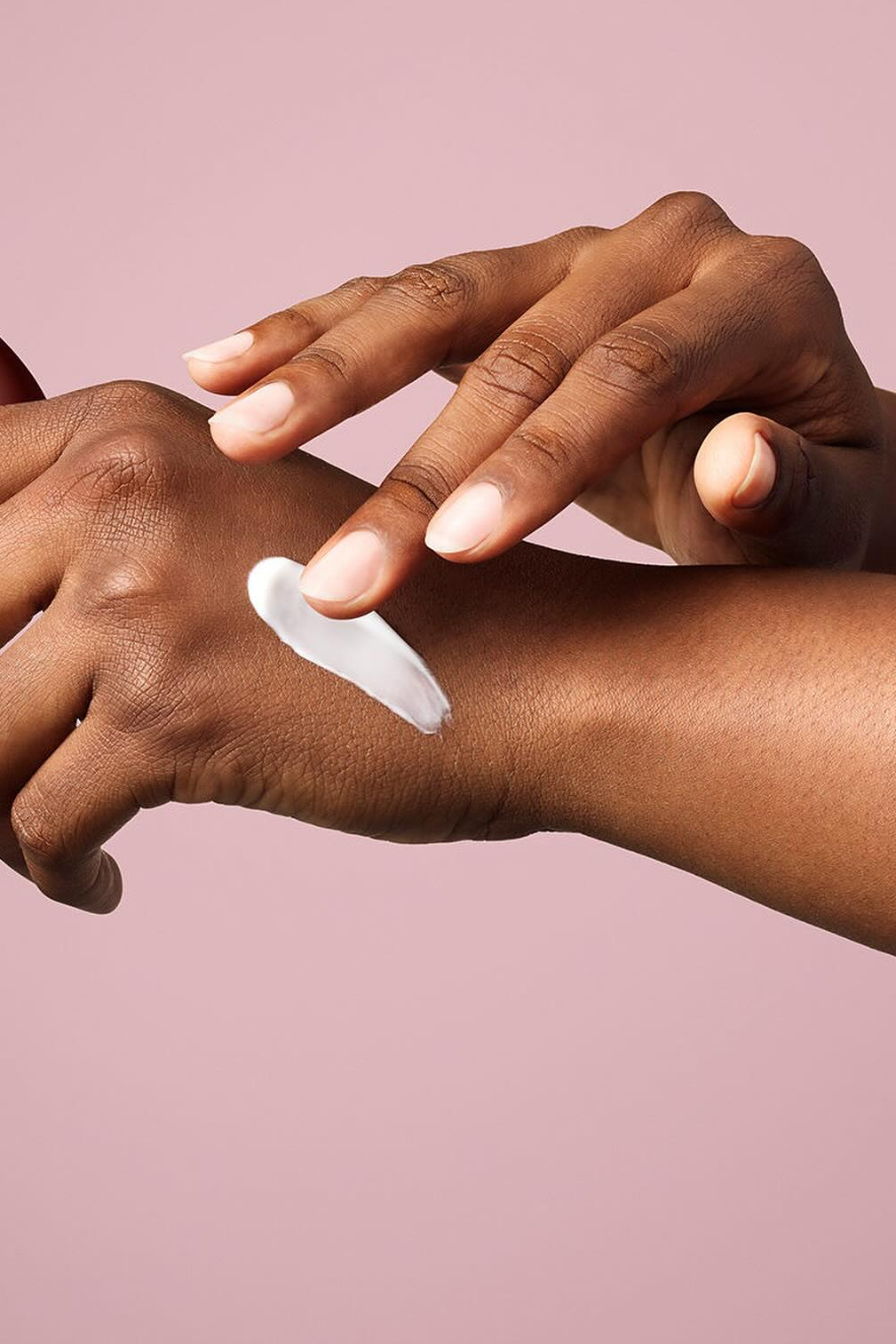Having beautiful hands is more than just a vanity goal; it’s a reflection of your overall health and self-care practices.
This post will delve into seven key strategies to help you nurture and protect your hands. These tips will guide you towards maintaining youthful, beautiful hands.
Busy? Save this pin for later.
1. Use Lukewarm Water for Washing
Using lukewarm water to wash your hands is a simple yet effective way to maintain healthy skin while ensuring cleanliness.
Lukewarm water, typically around 100°F (38°C), strikes the perfect balance between removing oils, dirt, and bacteria without causing irritation or dryness to your skin.
This temperature helps in opening your pores, allowing soap to penetrate more effectively and wash away impurities. It also preserves the natural oils that protect your skin, preventing it from drying out.
When you wash your hands with lukewarm water, you’re not just cleaning them; you’re also caring for the skin’s health.
This practice is supported by various studies, including one from Rutgers University, which found that water temperature does not need to be extremely hot to be effective in removing germs. Instead, what matters more is that the water is comfortable enough to encourage thorough washing.
The Centers for Disease Control and Prevention (CDC) advises against using hot water for handwashing as it can lead to skin dryness.
2. Apply Moisturizer to Damp Hands
Applying moisturizer to damp hands is crucial for locking in hydration, enhancing the effectiveness of the moisturizing product.
When your skin is damp, it’s already hydrated, and using a moisturizer at this stage helps to seal that moisture in.
This method is particularly beneficial after washing your hands, taking a shower, or engaging in activities that might dry out your skin.
Moisturizer Timing
The optimal times to apply moisturizer are immediately after you have washed your hands or when they are just slightly damp.
This timing ensures that the hydration from the water is locked in effectively by the moisturizer. It’s advisable to keep a hand cream nearby your sink or in your bag so you can apply it right after handwashing, regardless of your location.
Moisturizer Application
To apply the moisturizer effectively, start by gently patting your hands with a towel after washing—just enough to stop the water from dripping but not too much that your hands are dry.
Then, take a small amount of moisturizer and rub it between your palms before applying. Use light, upward motions to spread the moisturizer evenly.
This technique helps avoid dragging the skin and ensures that the moisturizer is absorbed effectively.
Moisturizer Absorption
For the moisturizer to fully absorb and provide optimal benefits, it should not leave your hands feeling greasy. If you find excess product on your hands, simply pat it off with a damp cloth.
For an added hydration boost, especially during dry seasons or for those with particularly dry skin, consider applying a thicker layer of moisturizer at night and wearing cotton gloves.
This overnight treatment allows for deep moisturization, helping you wake up with soft, supple hands.
3. Wear Work Gloves
Wearing work gloves is crucial in protecting your hands from various hazards, whether you’re involved in construction, manufacturing, or even routine gardening.
Work Gloves Importance
The importance of work gloves cannot be overstated. They are designed to offer protection against physical hazards such as sharp objects, abrasive surfaces, and harmful chemicals.
Additionally, they can prevent burns from hot materials and minimize the risk of electrical shocks. For those in healthcare or food services, gloves also prevent contamination, protecting both the wearer and others.
Work Gloves Types
There are several types of work gloves to suit different job requirements. Leather gloves are known for their durability and are commonly used in construction and heavy-duty work.
Latex, nitrile, and vinyl gloves are preferred in medical and food handling environments due to their disposability and hygiene benefits.
For tasks that involve handling chemicals, chemical-resistant gloves made from materials like neoprene or butyl provide necessary protection. In cold environments, insulated gloves keep your hands warm while maintaining dexterity.
Work Gloves Usage
Effective use of work gloves involves more than just wearing them. It’s essential to choose the right type of glove for the task at hand.
Ensure the gloves fit well—neither too tight nor too loose—to maintain comfort and functionality. Regularly inspect your gloves for signs of wear and tear such as holes, tears, and degraded materials.
Replace them immediately if damage is found. Proper care and maintenance, according to the manufacturer’s instructions, will extend the life of your gloves and ensure they continue to provide adequate protection.
4. Choose Hand Cream with Key Ingredients
Choosing the right hand cream with key ingredients is essential for maintaining the health and beauty of your hands.
Nature often knows best when it comes to skincare, so opt for products enriched with natural ingredients.
These components provide deep nourishment without the harshness of synthetic additives and add to the overall health and resilience of your skin.
Ingredient Benefits
Ingredients like shea butter, aloe vera, and vitamin E are staples in effective hand creams. Shea butter offers deep nourishment and moisturization, while aloe vera hydrates and soothes the skin without leaving a greasy after-feel.
Vitamin E is an antioxidant that protects the skin from free radicals and aids in moisture retention. Additionally, ingredients like hyaluronic acid and jojoba oil pull in moisture to keep your hands hydrated and youthful.
Ingredient Types
When selecting a hand cream, look for one that includes humectants such as glycerin or hyaluronic acid, which attract and retain moisture.
Emollients like shea butter and jojoba oil improve the skin’s moisture retention and texture. Also, consider creams that contain ceramides and natural oils, which reinforce the skin’s barrier and prevent moisture loss.
Ingredient Combinations
The combination of these ingredients in a hand cream can significantly enhance the health and appearance of your skin.
For instance, a cream that combines shea butter and vitamin E can provide intense moisture while protecting the skin from environmental damage.
Adding ingredients like arbutin can also help in brightening and evening out skin tone, especially if you have pigmentation or dark spots on your hands.
5. Gently Exfoliate Hands
Exfoliating your hands is a key step in maintaining their softness and radiance. By removing dead skin cells, you reveal the fresh, smooth skin beneath.
Choose products that are gentle yet effective, containing ingredients like alpha hydroxy acids or natural scrubs such as oatmeal or sugar.
When applying, use light circular motions to avoid irritating your skin, focusing on areas that may need extra attention like around your nails.
For those with more sensitive skin, opt for chemical exfoliants that include ingredients like glycolic acid or lactic acid, which offer a milder exfoliation compared to physical scrubs. Ensure the product suits your skin type to prevent any adverse effects.
The frequency of exfoliation should be tailored to your skin’s needs and the type of exfoliant used. Generally, exfoliating once or twice a week is sufficient.
Over-exfoliation can strip the skin of its natural oils, leading to dryness and irritation. Monitor how your skin responds and adjust accordingly.
After exfoliating, it’s crucial to moisturize your hands thoroughly. This replenishes hydration and protects the newly exposed skin layers.
Choose a moisturizer that complements the exfoliation process by soothing and nourishing your skin. For optimal care, consider using a product that includes hydrating ingredients like aloe vera or jojoba oil, which help to maintain moisture balance and skin health.
6. Use Retinol for Anti-Aging
Retinol Benefits
Retinol, a derivative of vitamin A, is celebrated for its anti-aging properties. This powerhouse ingredient helps to accelerate skin cell turnover, fade spots, and reduce the appearance of lines and wrinkles.
When applied to your hands, retinol can significantly improve skin texture and tone, making your hands look younger and more vibrant.
It boosts collagen production, which is crucial for maintaining skin elasticity and firmness. Additionally, retinol can help in treating and preventing crepiness, brittle cuticles, and uneven pigmentation.
Retinol Application
For optimal results, you should apply retinol to your hands at night, allowing it to work its magic undisturbed.
This timing is crucial as it avoids sun exposure, which can make your skin more sensitive when using retinol.
A pea-sized amount is sufficient for both hands. Massage it gently into your skin, focusing on areas with visible aging signs.
It’s important to start slowly, perhaps applying it every other night, and gradually increase the frequency as your skin adjusts to prevent irritation.
Retinol Products
When selecting a retinol product for your hands, look for formulations that are specifically designed for the delicate skin on your hands.
These products often contain a blend of hydrating and soothing ingredients to offset any potential dryness or irritation caused by retinol.
Ingredients like hyaluronic acid, peptides, and AHA can complement retinol’s effects by providing additional moisture and enhancing skin repair.
Always follow up with sunscreen during the day to protect your hands from UV rays, which can counteract the benefits of retinol.
7. Maintain Healthy Nail Care
Maintaining the health of your nails is as crucial as caring for your skin.
Proper nail care not only enhances the appearance of your hands but also prevents various nail problems such as brittleness, fungal infections, and splitting.
Here are some effective tips to help you keep your nails strong and beautiful.
Nail Care Routine
Start by keeping your nails clean and dry to prevent bacteria from growing under your nail bed. Regularly trim your nails to avoid snags and tears.
If your cuticles are dry or peeling, it’s essential to keep your hands well-moisturized. Consider visiting a salon to have your cuticles trimmed professionally until you’re comfortable doing it yourself at home.
It’s also beneficial to incorporate a gentle hand scrub into your routine to remove dead skin cells and smooth the texture of your hands.
Nail Care Products
Selecting the right products is vital for effective nail care. Use a high-quality cuticle oil or cream to nourish and protect your cuticles, which are crucial for nail health.
For nail polish removal, opt for a gentle, non-drying remover that conditions the nails while effectively removing polish.
A nourishing base coat can also prevent your nails from yellowing and provide a good foundation for nail polish.
Nail Care Tips
Apply a protective top coat to enhance the durability of your nail polish and prevent chipping. Avoid using your nails as tools to pull open or pry things, as this can cause significant damage.
Moisturizing your hands and nails is essential, especially after exposure to water or chemicals, which can strip natural oils from your skin and nails. Regularly applying hand cream will keep your nails and cuticles supple and prevent dryness.
Conclusion
Through the exploration of natural and accessible methods, this article has laid out a comprehensive pathway towards achieving beautiful hands.
Emphasizing the importance of regular hand care routines, from the selection of appropriately tempered water for washing to the application of nutrient-rich moisturizers on damp skin, we have underscored the significance of incorporating gentle yet effective strategies in everyday skincare.
Equally essential is the protection offered by work gloves during physical activities and the targeted approach of using specific hand creams enriched with natural ingredients, which together ensure the maintenance of skin health and vitality.
Highlighting the broader implication, this discourse serves as a reminder of the intricate relationship between self-care practices and their impact on our personal presentation and confidence.
As we conclude, let it be a call to action for individuals to nurture their hands with the care and reverence they deserve, recognizing them as a vital aspect of their personal journey towards holistic well-being.











Leave a Reply
You must be logged in to post a comment.